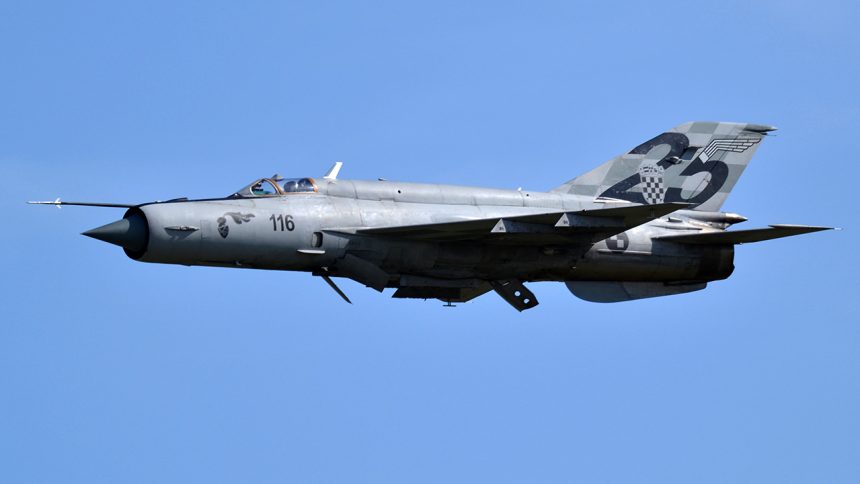Last weekend, the Croatian Air Force organized an airshow at Zagreb airport to celebrate the retirement of the MiG-21 Fishbed and the arrival of its replacement, the Dassault Rafale.
On May 11, 2024, Zagreb Franjo Tuđman airport hosted AirVG (VG stands for Velika Gorica, as the airport covers an area located in the territory of the city), an air show that attracted many aviation enthusiasts from all over Europe since it featured the last public appearance of the Croatian MiG-21s before their retirement.
The static display showcased all the aerial assets currently in service with the Croatian Air Force, with the exception of the aerial firefighting fleet.
A single seater Rafale F-3R (nr. 153) was parked on the apron near two historical MiGs. The first six French fighters landed in Zagreb on April 25, 2024, while the other six second-hand ordered aircraft should arrive before the end of the year. The Rafale was fitted with two RPL 741 auxiliary fuel tanks with a capacity of 2000 L each.
The MiG-21UM “Kockica” (165) is a special color painted in red and white fields of the checkerboard of the Croatian coat of arms. The aircraft is not airworthy and is stored in the military part of Zagreb airport.
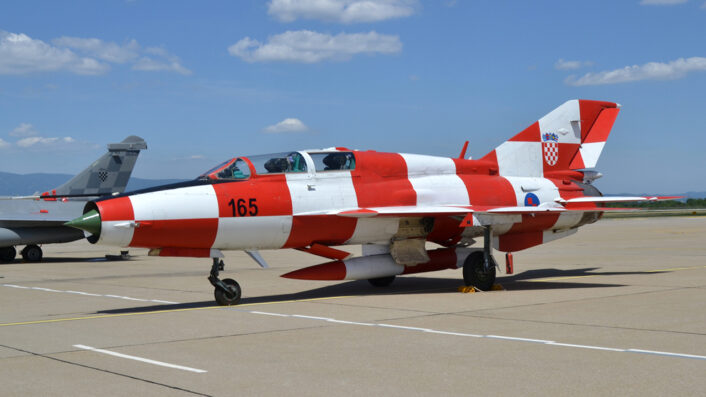
The other historical plane was a MiG-21R (26112) also known as “Rudijev MiG” because the Croatian pilot Rudolf Perešin defected from the Yugoslav Air Force to Klagenfurt, Austria on October 25, 1991, with it. Perešin took off from the famous Željava-Bihać airbase and after a photo reconnaissance mission over Slovenia landed in Austria. The aircraft retained its original Yugoslav Air Force livery and was exhibited also at AirPower air show in 2011. The MiG finally returned in Croatia in 2019. Perešin joined the Croatian Armed Forces just some days after his defection and fought in the Croatian War of Independence. He was killed during a CAS mission on May 2, 1995, when his MiG-21 was shot down near Stara Gradiška. Perešin was posthumously promoted to the rank of brigadier general and he is remembered also with the yearly air show “Susreti za Rudija”.
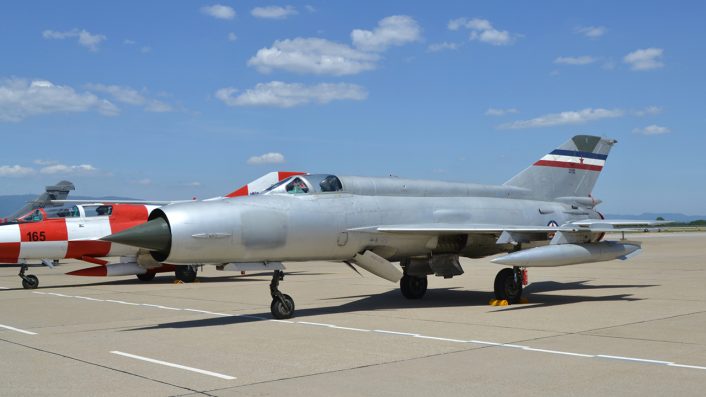
The third and last MiG on display, a MiG-21 bis D (133), was placed on the other part of the apron, near the parking that was reserved for the helicopters. The aircraft, which is one of the last that are still operational, was fitted with three auxiliary tanks.
The last fixed wing aircraft of the Croatian Air Force on static display were a Pilatus PC-9M (backup aircraft of the display team Krila Oluje (Wings of Storm)) and a Zlin 242L.
All rotorcraft types in service with the Croatian Air Force were on display, starting from a Bell 206B “Jet Ranger” (604) used for training.
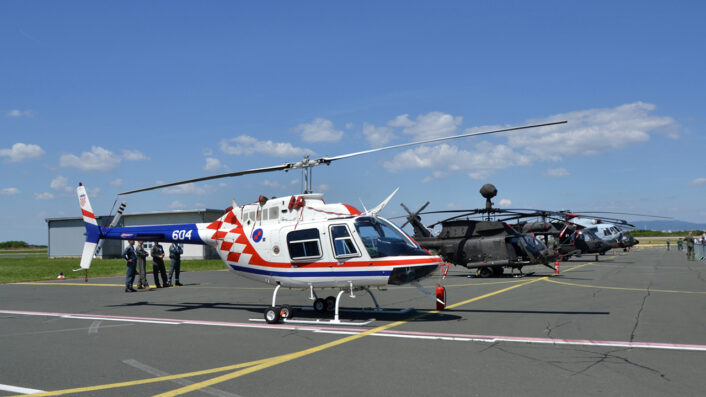
The next one was an OH-58D “Kiowa Warrior” based in Zemunik AB, near Zadar. Croatia received sixteen used Kiowa Warriors from the USA and lost one in 2020 in a crash that unfortunately killed both pilots.
The UH-60M “Black Hawk” is also a common sight over Zagreb, four of them, donated by the USA are based at Zagreb – Lučko AB. The MoD decided to purchase eight more UH-60s with deliveries expected in 2028. The only Soviet designed helicopter in Croatian service, after the donation to Ukraine of the Mi-8 fleet, remains the Mi-171sh. Ten of these were given by Russia after 2006 as compensation of a debt and all of them were upgraded in 2019.
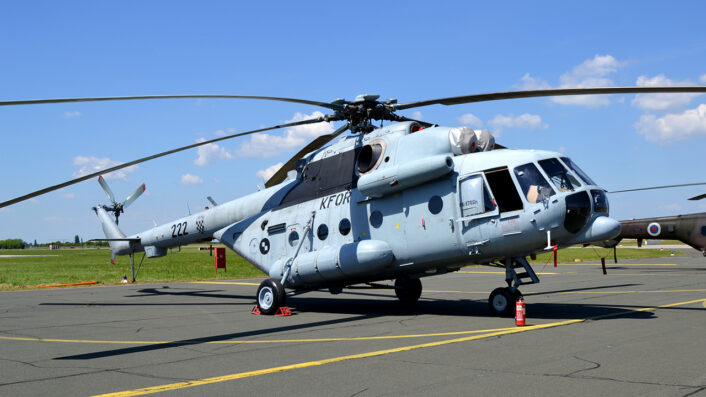
The Mi-171sh on display had KFOR markings. The last helicopter on the apron, an AS-532AL Cougar of the Slovenian Army, was also the only international guest at the air show. The crew flew it from the nearby (approx. 50 km) Cerklje ob Krki AB earlier in the morning.
The Croatian Armed Forces presented also two Israeli made Orbiter 3b UAS, while the civilian part of the display consisted in a motor glider Scheibe SF.25C Falke and two more gliders, a Glasflugel H205 Club Libelle and a Eiriavion PIK-20-D.
The flying display started at 15:00 with the takeoff of the six Pilatus PC-9M of Krila Oluje. The team entertained the public for approximately 20 minutes with spectacular formation flying and aerobatic maneuvers.
Zagreb airport remained open to the civilian traffic, the activity was concentrated in between the various exhibitions. The show continued with a solo display of a Zlin Z 242L that demonstrated impressive aerobatic capabilities.
A parachutist then bailed out from a Mil Mi-171sh and landed on the runway, marking the start of the simulation of a CSAR operation behind enemy lines that involved a Mi-171 that disembarked some troops and two supporting OH-58D Kiowa Warriors.
Then it was time for the most awaited part of the air show, with a Rafale (150) and a MiG-21bis (116) that started slowly taxiing in front of the public. The Rafale was fitted with a single auxiliary tank under the fuselage, while the MiG, with the tail art dedicated to the 25th anniversary of the Croatian Air Force, was in a clean configuration.
The old followed the new and so the Rafale took off first followed shortly after by the MiG. Both aircraft lifted off with the use of afterburner and then performed same maneuvers in front of the public, before a noisy low pass of the MiG and a final formation flight that was accompanied by the musing of Rim Tim Tagi Dim, the song with which the Croatian singer Baby Lasagna was competing at Sunday’s Eurovision’s finale.
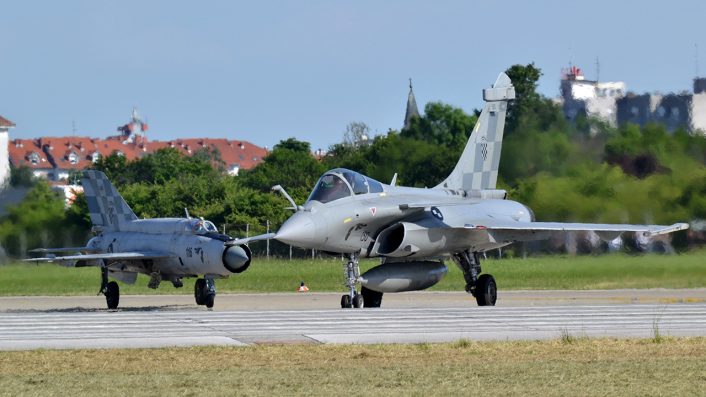
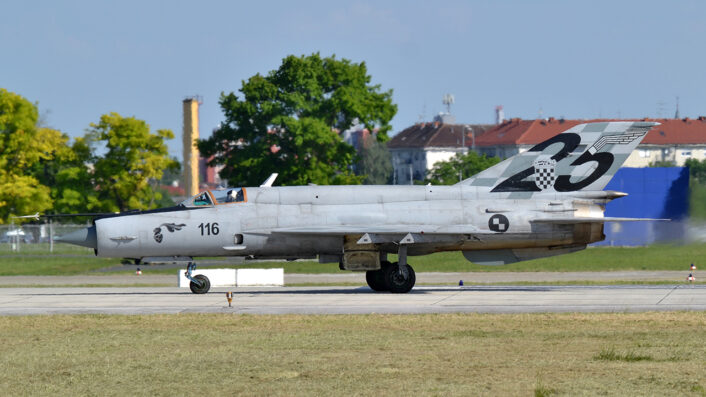
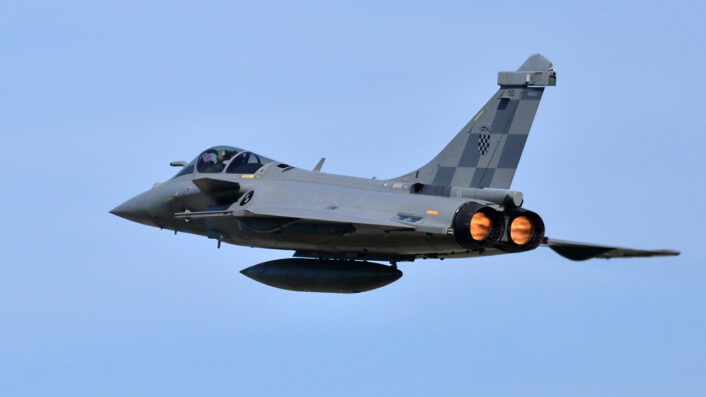
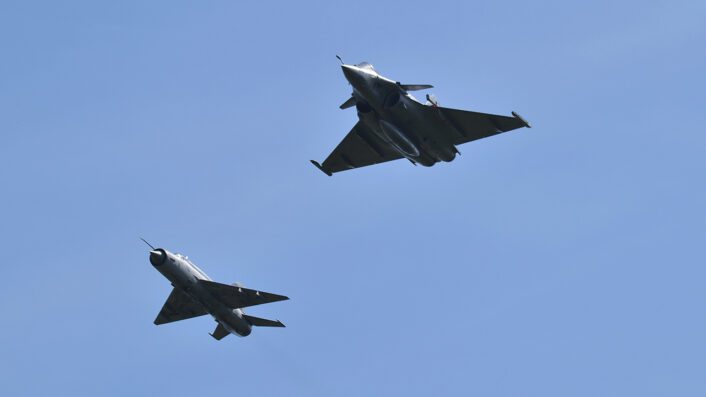
Shortly after the MiG landed back and deployed the drogue parachute. The Rafale performed a last low pass before touching down and returning to its hangar on the military side of the airport.
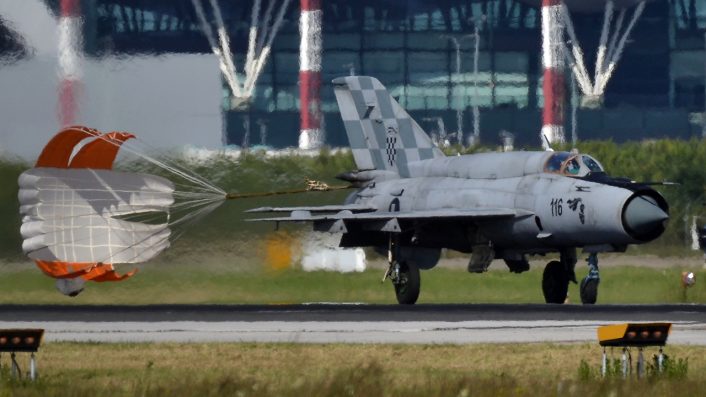
The air show ended with the exhibition of a Bell 206 Jet Ranger from the 393rd Helicopter Squadron and the goodbye of the PC-9Ms of Krila Oluje, that took off for Zemunik.
The air show was attended by 10,000 lucky visitors that managed to grab the available free tickets from the dedicated web site and more than 350 planespotters. It was a good occasion for the Croatian Air Force not only to say a public goodbye to the MiG-21 and at the same time welcoming the Rafale, but also to showcase its capabilities, assets and recruit new personnel.
In the early afternoon, before the start of the flying program, the Air Force organized the panel discussion “How to become a military pilot”.
The arrival of the Rafale marks an important milestone for the Air Force and it is also the most expensive contract signed (valued at 1,1 billion Euro) for the modernization of the Armed Forces. The neighboring Serbia will also replace its fleet of MiG-29s with twelve brand – new Rafales for 3 billion Euro.

